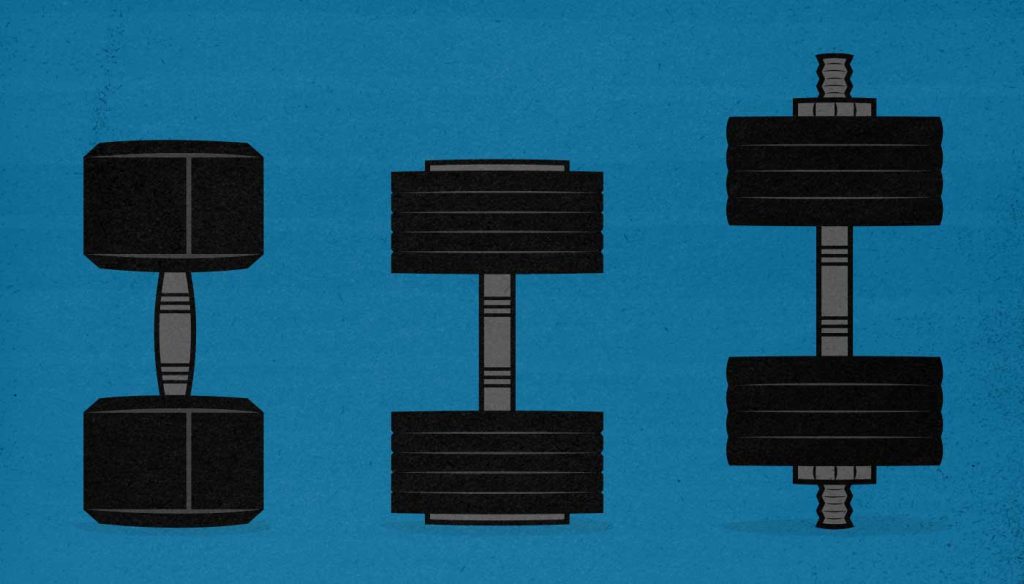
Which Adjustable Dumbbells Should You Get? How Heavy?
This article covers how to build a dumbbell home gym, which is ideal for people living in smaller apartments or on a tight budget. With a pair of adjustable dumbbells, you can build just as much muscle as you can with a full barbell home gym. Your workouts may not be quite as efficient, but there are actually some interesting advantages to dumbbell training, too—especially for your arms, chest, and shoulders.
There are several different types of adjustable dumbbells, and some are much better than others. When I built my first dumbbell home gym, I made the mistake of buying the wrong type. They were rickety, it was difficult to adjust the weight, and I couldn’t rest them on my legs, making it hard to do the dumbbell bench press. They were such a pain to use that I wound up disliking dumbbell training. But we’ve learned a lot since then. Buying better dumbbells makes all the difference.
Finally, there are some great accessories you can add to your dumbbell home gym, including a workout bench, a chin-up bar, a couple of kettlebells, and maybe even some parallettes or gymnastic rings. These are totally optional, but we’ll go over the advantages they offer.
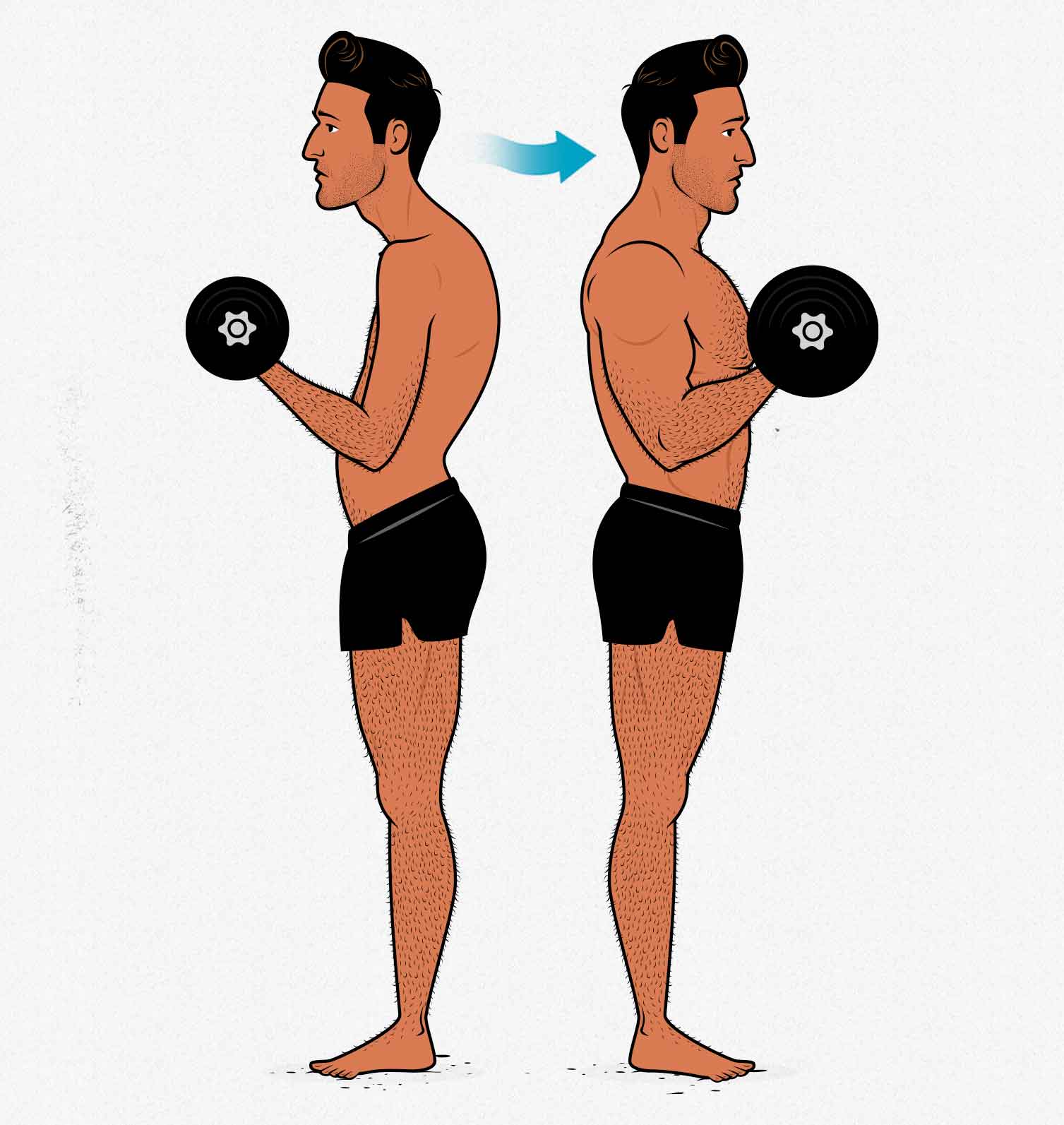
The Advantages of a Dumbbell Home Gym
The majority of your muscle growth comes from doing the big compound lifts along with a few key accessory lifts, and it doesn’t much matter whether you do them with a barbell, dumbbells, or exercise machines. Commercial gyms have a wide variety of equipment and exercise machines, ranging from cable machines to preacher curl benches, but none of that is needed to build muscle at full speed.
Training at home has some advantages, too. It saves you from the cost of a gym membership and the hassle of commuting. You also get to choose your own equipment and never need to wait to use it. So even if training at a commercial gym is slightly more efficient, training at home often eats up less total time.
If you have the space for it, barbell home gyms are a great default. If you don’t have the space for it, dumbbell home gyms are a great alternative. You can store the dumbbells in the closet or bury them in the earth of a large potted plant. All you need is a bit of floor space to do your workouts.
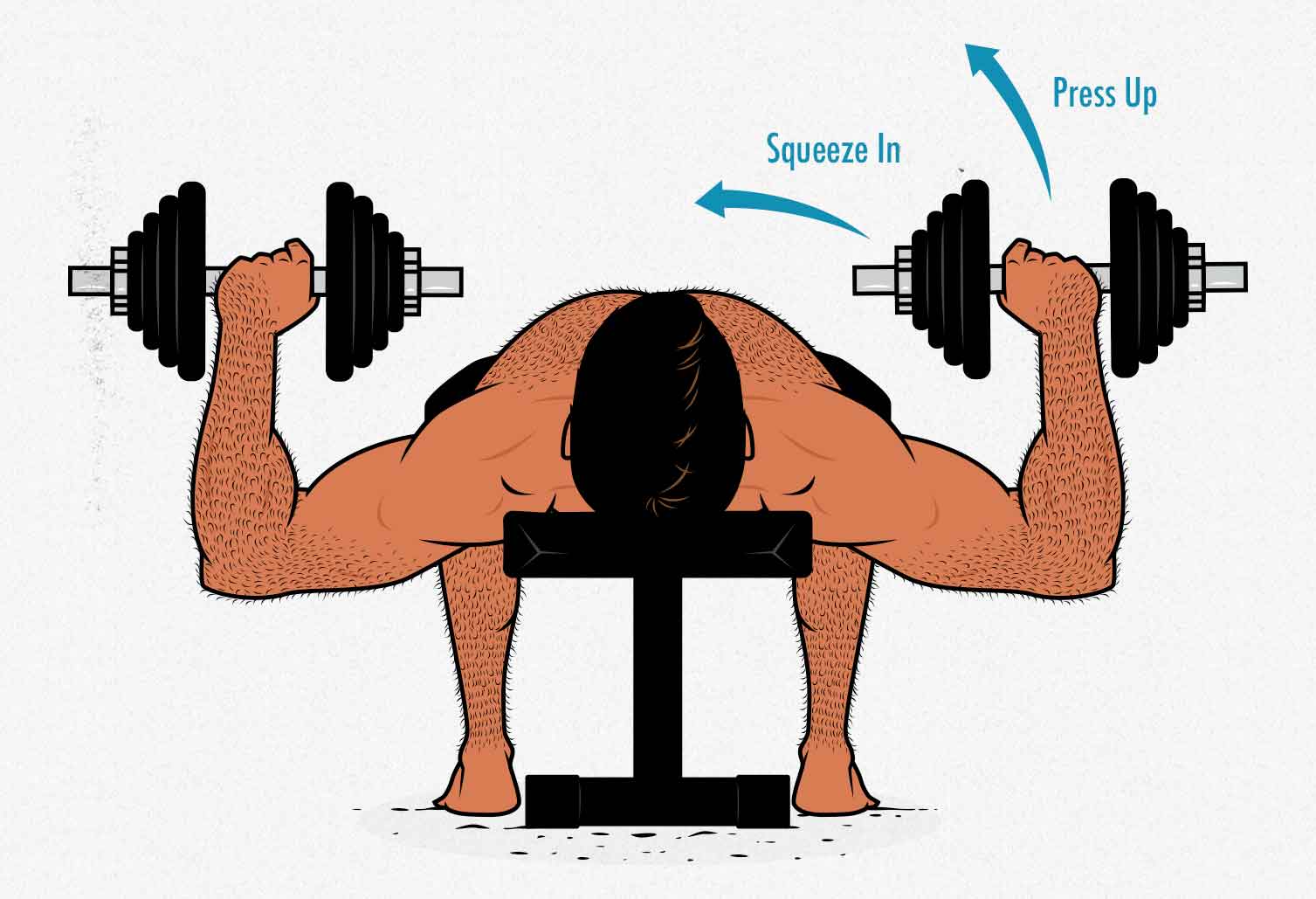
Dumbbells are as good as barbells and exercise machines for building muscle, especially in your upper body. In fact, for some lifts, dumbbells offer some advantages over barbells. For example, consider the bench press. With the barbell bench press, all you need to do is press the weight up. But with the dumbbell bench press, you also need to hug the weights together, similar to a dumbbell fly. As a result, your chest needs to work proportionally harder.
The downside to dumbbells is that they aren’t always as efficient. Going back to the bench press example, dumbbells shift more emphasis to your chest, but at the cost of your triceps. After all, if you flex your triceps during a dumbbell bench press, the dumbbells will shoot off to the sides. As a result, it becomes even more important to include triceps extensions in your workout routine.
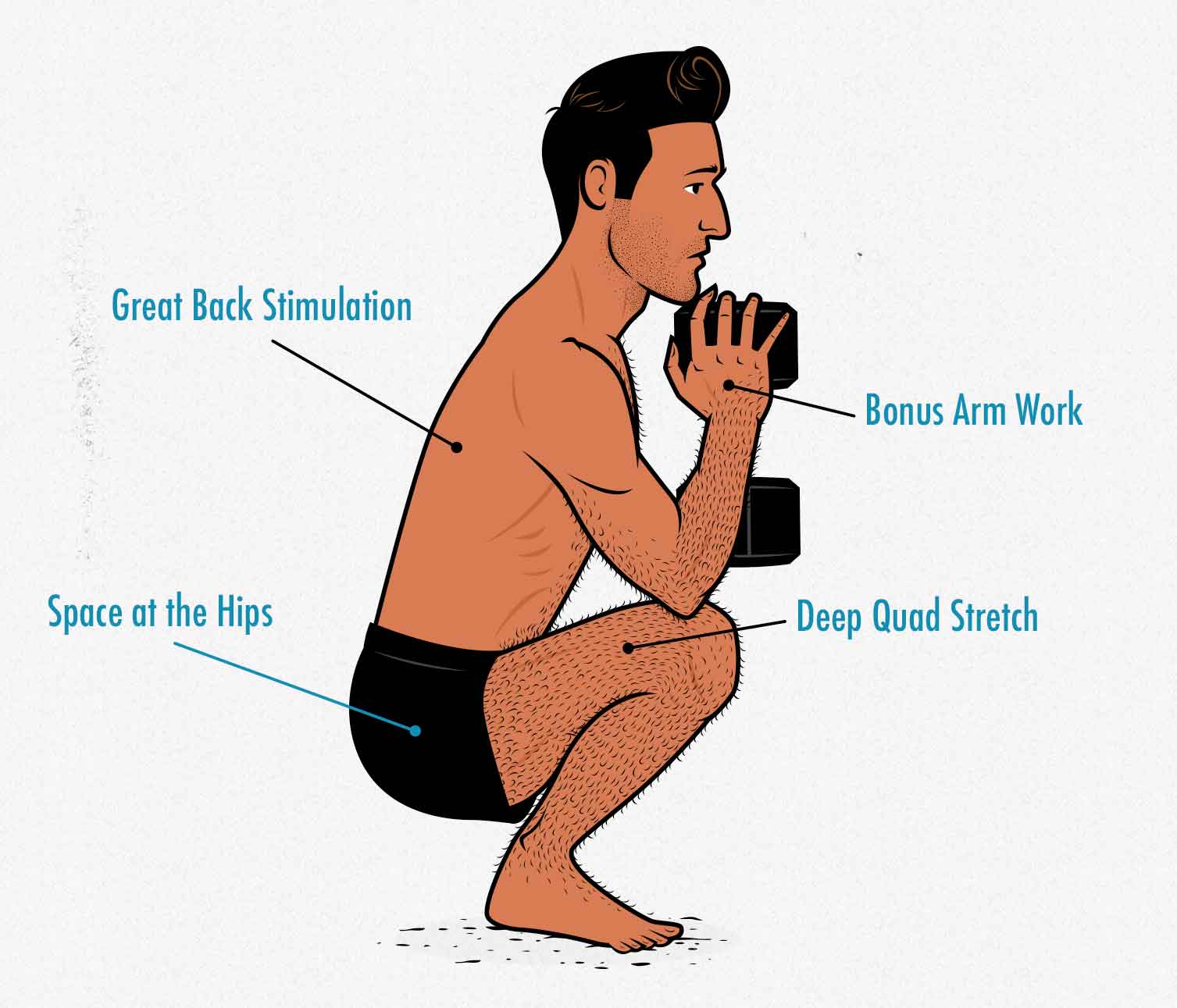
The bigger downside to dumbbells is with the leg lifts. Goblet squats are ideal for beginners. The problem is, you’ll eventually get to a point where you’re too strong to train both legs at once. You’ll have to switch from goblet squats to split squats. Your leg training will begin to take longer. You’ll need to endure twice as many painful sets. Plus, because you’ll be lifting lighter loads, you won’t be training your spinal erectors as hard.
Because it’s harder to build massive, strong legs with dumbbells, most serious strength athletes and bodybuilders train at commercial gyms or get barbell home gyms. For the average skinny guy who’s trying to build muscle, though, it matters much less. If you can do sets of goblet squats for 12–15 reps with a 100-pound dumbbell, your legs will look great.
How to Build a Dumbbell Home Gym
If you have a decent budget but don’t have space for a full barbell home gym, the second-best option is to build a nice dumbbell home gym. It’s a very close second, too. You can build muscle just as fast, especially in your upper body; it’s just that your workouts might take slightly longer. Instead of doing three hourlong workouts each week, you might be doing three 75-minute workouts each week. Not a big difference.
- Adjustable Dumbbells: these are the only required piece of equipment. With a pair of adjustable dumbbells, you can build muscle at nearly full speed.
- Workout Bench: we recommend getting an adjustable bench for extra versatility. It’s optional, though, and you can always buy it later on. The main thing you need it for is the dumbbell bench press, but you can always do push-ups instead.
- Chin-up bar or gymnastic rings: you can train your back with dumbbell rows and pullovers. That’s enough, especially for a beginner. But chin-ups are the best back exercise. If you can do them, your workouts will get even better.
The Best Adjustable Dumbbell Brands to Buy
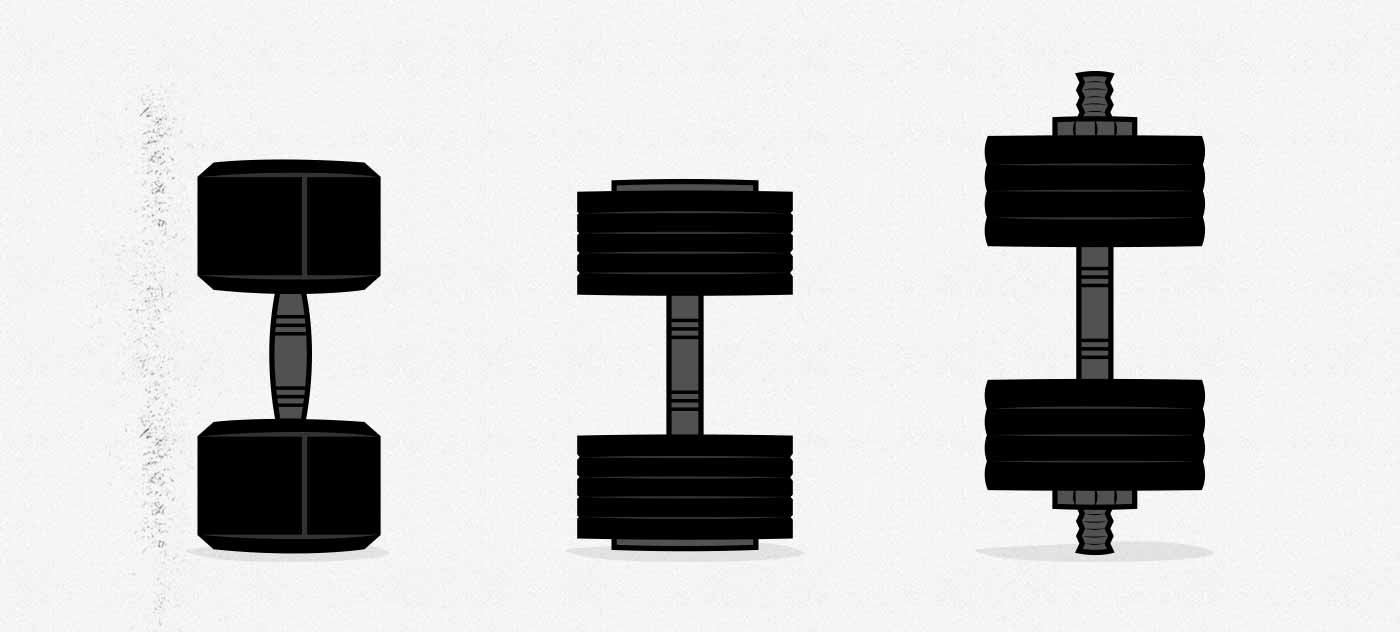
There are three different types of adjustable dumbbells that you can buy:
- Fixed-weight dumbbells (left): most commercial gyms have an assortment of fixed-weight rubber dumbbells, which are incredibly sturdy, don’t rust, and can be tossed around without breaking. These are great, but getting a whole set running from 10 to 100 pounds can be pricy. Plus, they take up a ton of space.
- Premium adjustable dumbbells (middle): Powerblock (Marco’s choice) and IronMaster (see review in comments) make sturdy adjustable dumbbells that are durable and easy to adjust. Their flat sides also make it easier to set up for most lifts. These are old brands with great reputations that have stood the test of time. We recommend these if you can afford them.
- Cheap adjustable dumbbells (right): several brands make cheap adjustable dumbbells you can load with little metal plates. They’re a bit more awkward than the premium ones, and they make it harder to do certain lifts (such as the dumbbell bench press), but they get the job done. I gained muscle with these without a problem, but I didn’t love them.
We often recommend that people get a pair of adjustable dumbbells that go up to at least 90 pounds. But if your adjustable dumbbells are lighter than that, don’t worry. You can do plenty with two 50-pound dumbbells. You’ll just need to lift in higher rep ranges and train your legs one at a time. It’s not a dealbreaker.
The Best Workout Bench Brands to Buy
First of all, you don’t need to buy a workout bench. They allow for quite a few movements, ranging from bench presses to incline curls. But you can do push-ups instead of bench presses. You can do standing dumbbell curls instead of incline curls. You can do dumbbell rows with your hand on your knee. Workout benches are nice to have, but don’t worry if you don’t have the money or space for one.
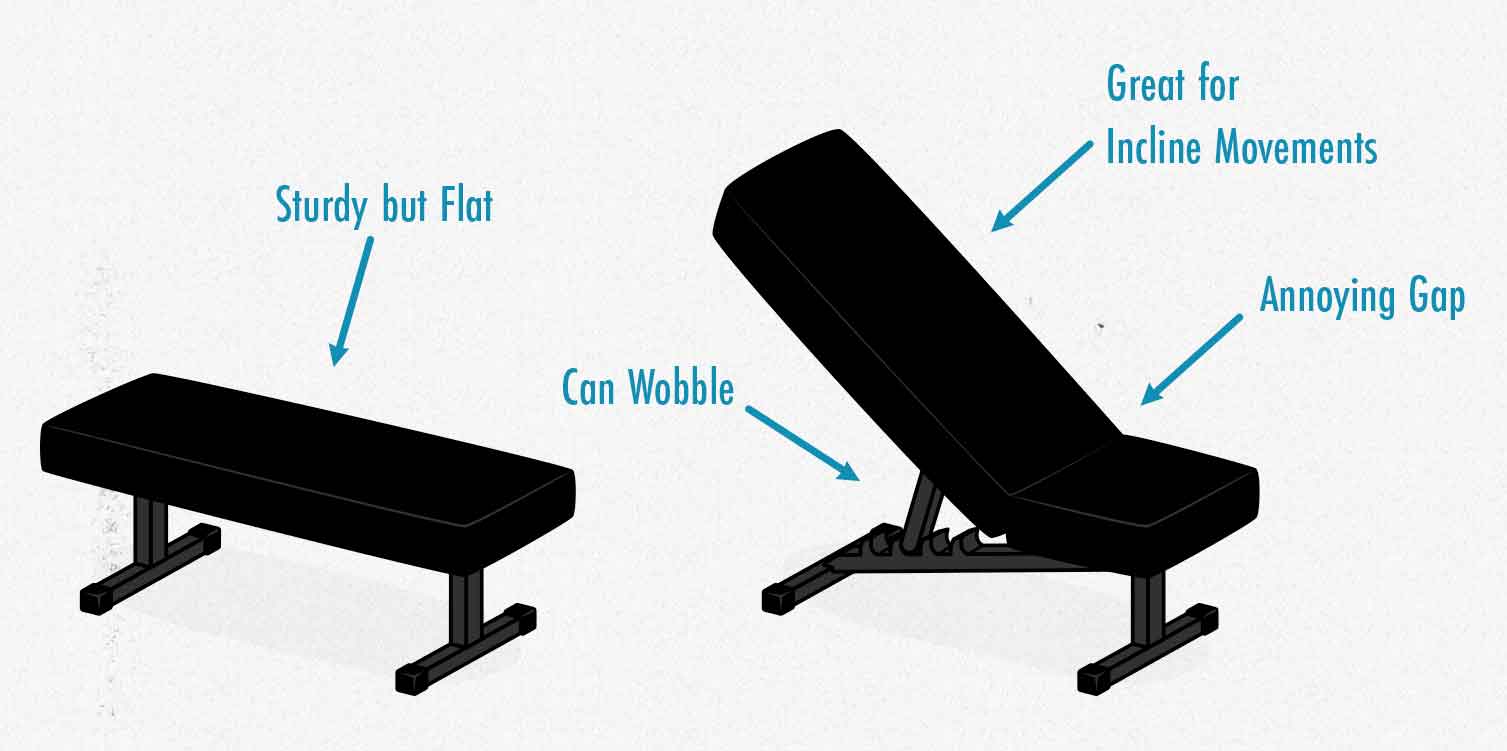
Flat benches are sturdy, comfortable, and often sit lower to the ground, making it easier to do the bench press. The problem is, you can’t adjust the incline. You can’t do incline bench presses, incline curls, incline reverse flyes, and various other incline lifts. That can be a bit of a problem, especially when you’re already limited to just dumbbell exercises.
Incline benches are more versatile, allowing you to do incline bench presses and incline curls—both great lifts—but they’re wobbly and don’t always work as well. The higher-end brands solve most of these problems, but they can be pricey.
The best workout benches for your dumbbell home gym:
- Rep Fitness Flat Bench ($169): This bench is sturdy, has a wide and grippy pad, and is 17 inches tall, which is perfect for all but the tallest of guys. People also love how it has just one leg in the front, giving you the freedom to position your feet however you like when benching. There’s also a version with a wider pad that’s popular among more competitive lifters.
- Rogue Adjustable Bench ($545): This bench is adjustable, sturdy, and has a minimal gap between the pads. It’s 17.5-inches tall, which makes it a little bit high for the bench press but great for everything else. If you can afford it, this is absolutely ideal.
- Rogue Flat Bench ($180): This bench is sturdy, durable, and welded together, removing any hint of wobble. The pad is flat, wide, grippy, and comfortable. The main downside for the average guy is that it’s 18 inches high. For taller guys, though, that’s an asset. (I’m 6’2 and use this bench. It’s amazing.)
- Rep Fitness Adjustable Bench ($209): This is an okay budget adjustable bench. It’s 17.5 inches tall, and it’s not that wobbly. I had a bench like this one but didn’t like it. I gave it to a friend and got a flat bench instead. Most people like them more than I do, though.
*Note that the Rogue Fitness links are affiliate links. After building my own home gym with their equipment, I became a fan of their brand and reached out to them for an affiliate deal. We’re not affiliates of Rep Fitness, but many of our members appreciate that they sell decent lifting equipment at lower prices.
The Best Chin-Up Bars to Buy
The first thing to note is that chin-up bars are often called pull-up bars. A chin-up is done with an underhand grip, a pull-up with an overhand grip. These are two different exercises, but the same bars are used for both. We call them chin-up bars because chin-ups are better for building muscle.
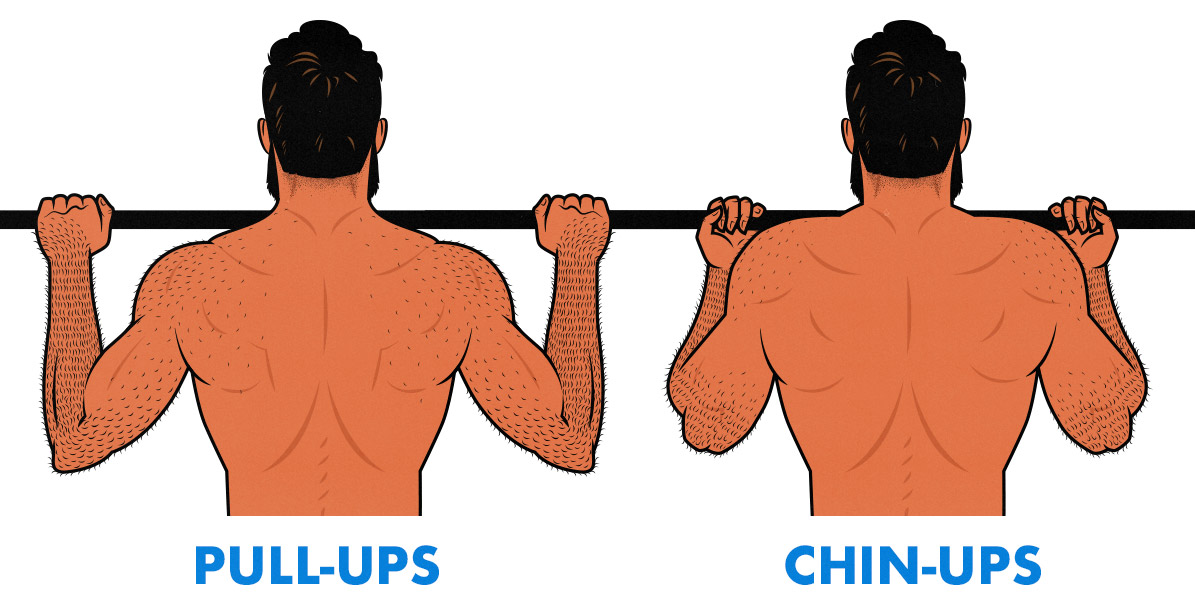
As with the bench, you don’t need a chin-up bar. You can build a great back with dumbbell rows and dumbbell pullovers. You can build great arms with biceps curls. You don’t have to do chin-ups. With that said, chin-ups are the best exercise for your back. A chin-up bar is something you can use every single workout. If you have room to mount one on a wall, they’re a great addition to a dumbbell home gym.
As for what type of chin-up bar to get, a simple straight bar is a good default. The only problem is that some people have cranky elbow joints that prefer a freer range of motion. In that case, gymnastics rings are a better choice.
- Rogue Gymnastic Rings ($72): gymnastic rings have the same functionality as a chin-up bar, but they allow your hands to rotate freely, making them easier on your joints. If you have a way to affix these to your ceiling, they’re a great default option.
- Rogue’s P3 wall-mounted pull-up bar ($150): this chin-up bar is made of coated steel, making it both sturdy and durable. It can be mounted 1–2 feet from the wall, which is more than enough space to do chin-ups. (They have another variant made for kipping pull-ups, but those aren’t any good for building muscle, so that doesn’t matter.)
- Rogue’s P5v ceiling-mounted pull-up bar ($125): this chin-up bar is also made of high-quality coated steel. The difference is that it can also be mounted to the ceiling. If you’re training in a garage, this extra versatility can be handy.
Extra Home Gym Equipment
Kettlebells
The problem with kettlebell training is that because you can’t adjust the weight, you need to adjust your reps instead. Instead of adding 5 pounds each workout, you need to fight for extra reps instead. As with bodyweight training, that can quickly become a nightmare. That’s why dumbbells are so great. They make progressive overload so simple. They allow you to follow a proper bulking routine.
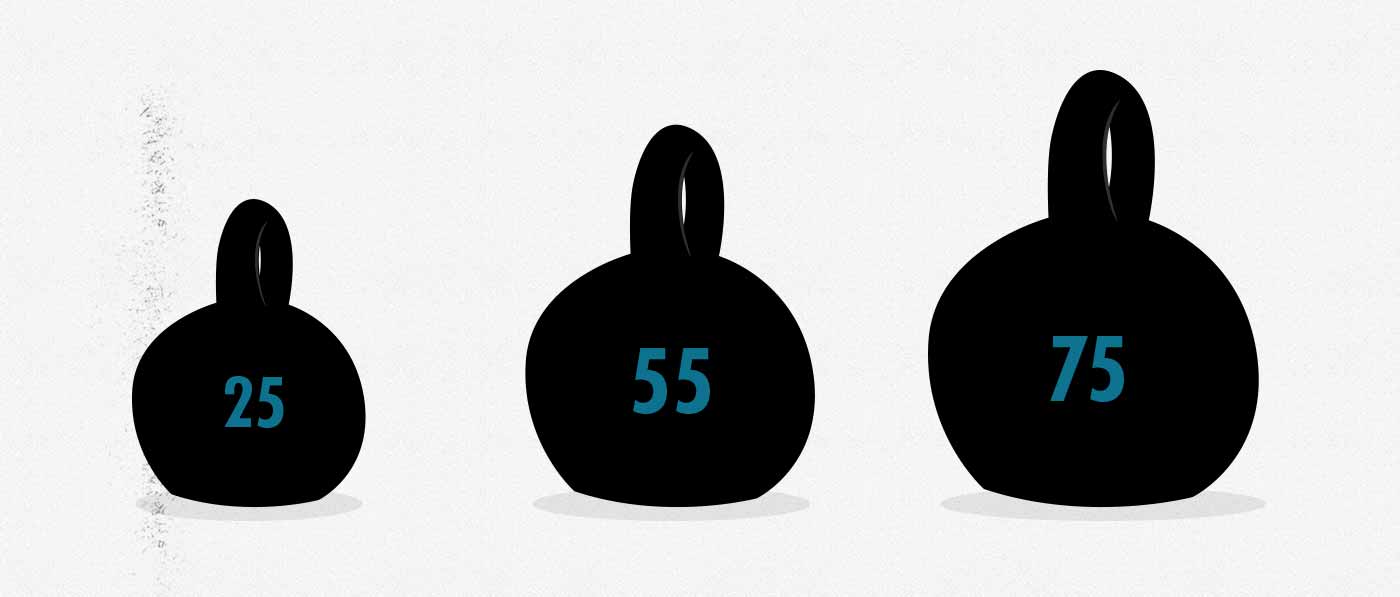
Even so, when I added kettlebells to my dumbbell home gym, I started enjoying my workouts way more. Kettlebells aren’t better for building muscle, and they didn’t improve my results. But some exercises feel better with kettlebells than dumbbells. They’re sturdy and ergonomic, and they have a lower centre of gravity, making them easier to balance. They don’t work well for all exercises—they’re awful for bench presses and biceps curls—but they’re great for some. In my case, I prefer doing my overhead presses, squats, and triceps exercises with kettlebells.
The other benefit is that having a few kettlebells lying around allows you to perform more of your exercises as supersets. You can do a set of dumbbell bench presses and then a set of goblet squats without needing to adjust the weight of your dumbbells. They’re handy and efficient.
- Rogue Kettlebells ($100): I recommend buying an 18-pound and 40-pound kettlebell. That way, you have a light and medium weight, giving you more flexibility with your rep ranges and exercise variations.
Most of our staff have some kettlebells in their home gyms, and they all swear by them. Kettlebells aren’t necessary, but they’re nice to have. I think you’d enjoy them.
The Power of Parallettes
If you don’t have a bench or if you’re a fan of push-ups, one of the best ways to upgrade your home gym is to get a pair of parallettes. Again, these are 100% optional. They’re cool, though. Parallettes raise your hands above the ground, allowing you to do push-ups with a deeper range of motion (deficit push-ups), making them even better for building muscle. They also let you do handstand push-ups, which are a great shoulder and trap exercise.
- Rogue Formed Parallettes ($75): these are a great default option, and are both sturdy and durable. But they’re also kind of bulky, making them harder to ship across countries or store in a closet.
- Rogue Bolt-Together Parallettes ($135): these bolt-together parallettes are a bit easier to ship and store, they’re just as sturdy and durable. But they’re also more expensive.
What About Resistance Bands?
At the moment, we don’t recommend resistance bands as a default option. It’s not that they don’t work; it’s just that they’re painful and inefficient. You may need to do several sets of resistance-band exercises to get the same muscle growth as you’d get from a single set of a dumbbell exercise. Plus, resistance-band training tends to feel harder and more painful (study, study).
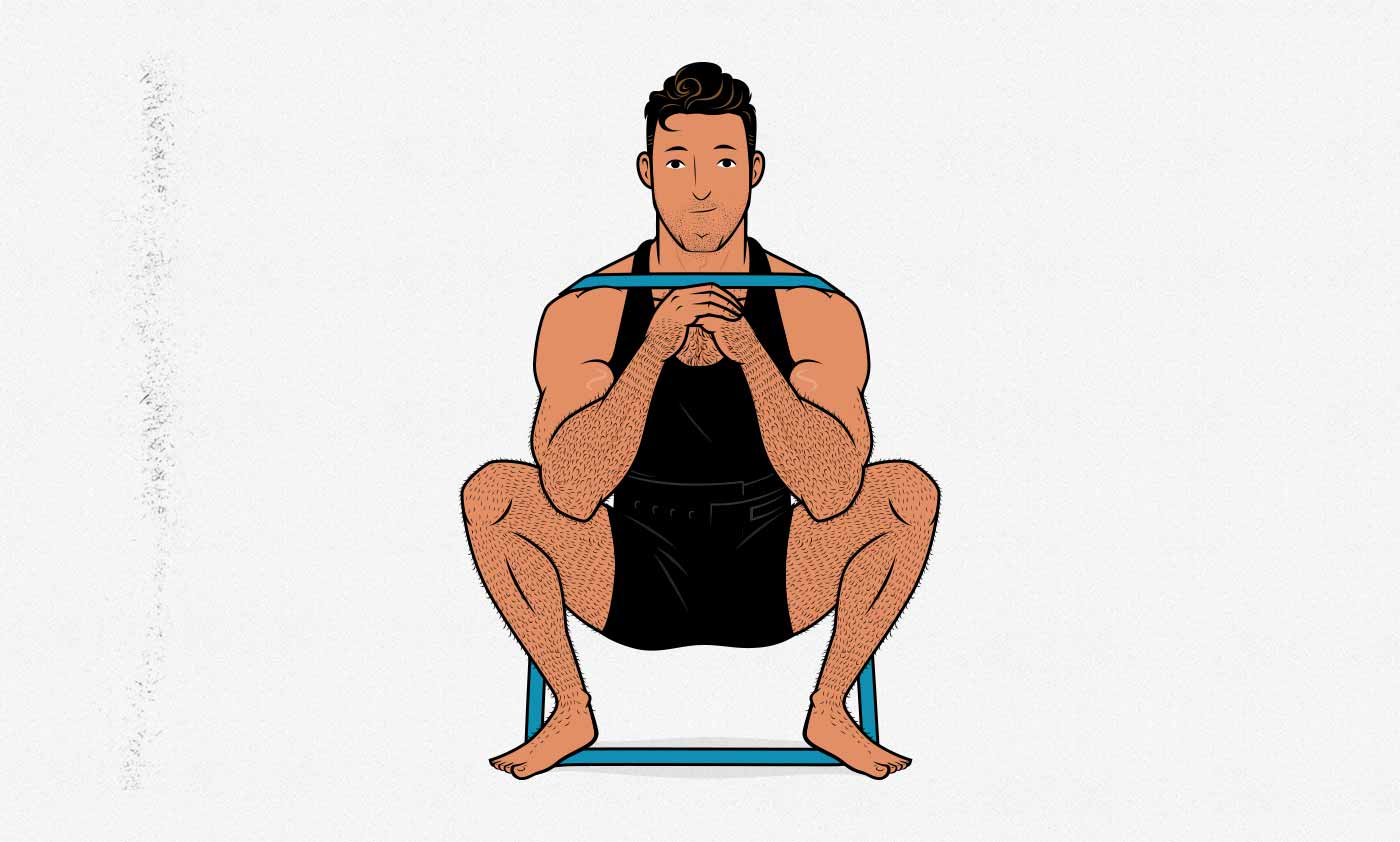
If all you need to get resistance bands, no problem. They can be a nice addition to bodyweight workouts, especially for arm exercises. But they aren’t in the same league as dumbbells. With adjustable dumbbells, you can do fairly optimal muscle-building workouts. With resistance bands, you can’t.
For more, we have a full article on resistance bands.
Dumbbell Exercise Alternatives
We use five big compound movements to build muscle, all of which can be trained with dumbbells. Here are some of the best dumbbell variations for those movements:
- Squat: goblet squat, dumbbell front squat, split squat, Bulgarian split squat, lunge, and step-up.
- Bench press: push-up, dumbbell bench press, and the incline dumbbell bench press.
- Deadlift: dumbbell sumo deadlift, Romanian deadlift, one-legged Romanian deadlift (aka kickstand deadlift), and hip thrust.
- Overhead press: dumbbell overhead press, alternating overhead press, one-arm overhead press, and vertical push-up.
- Chin-up: chin-up, pull-up, bent-over dumbbell row, one-arm dumbbell row, and dumbbell pullover.
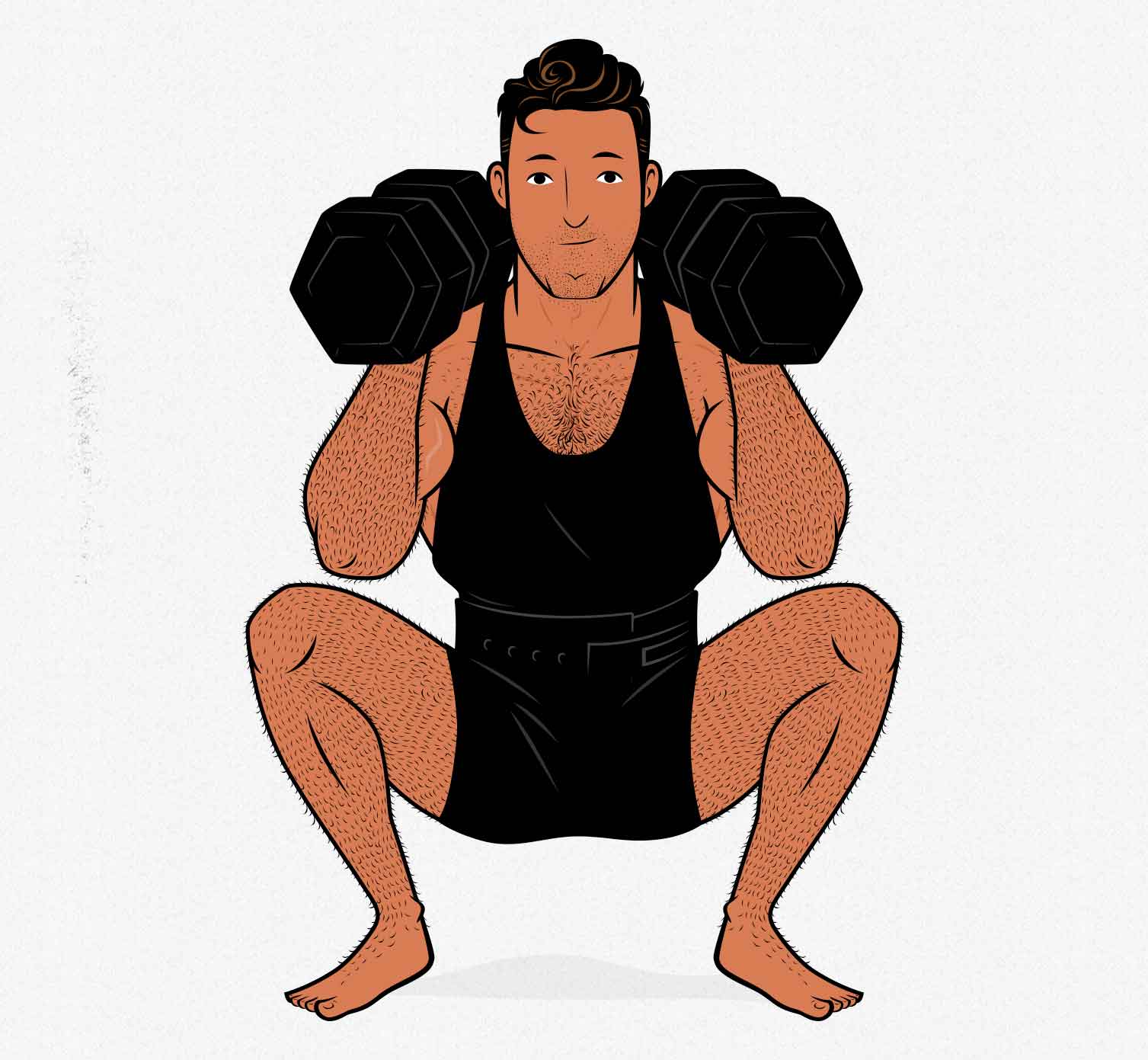
Compound lifts are great, and you can build a muscular physique with those alone. But you can make your workout routine even better by adding in some isolation lifts. For example, chin-ups and rows are great for your back muscles, but the extension at the shoulder joint interferes with biceps activation. So there are a few extra accessory lifts we recommend for building bigger arms. Dumbbells shine here:
- Biceps curls for building bigger biceps. Incline curls, biceps curls, and alternating biceps curls are great. If you want to emphasize your brachialis instead, you can do hammer curls.
- Triceps extensions for building bigger triceps. Skull crushers and overhead triceps extensions are great.
- Lateral raises for building broader shoulders. You can do them one side at a time or both at once. You’ve also got the option of doing upright rows.
This isn’t as much exercise variety as you’d get a commercial gym, but you get about as much as you would with a barbell home gym. And it’s enough. You’ve got at least a couple options for every movement pattern, allowing you to build good workout splits and to adjust your exercises from phase to phase.
These exercises are also good. You can bulk up your biceps just as well with dumbbell curls as with barbell curls. In fact, incline curls are arguably the best variation of all, and you can’t do them with a barbell. The same is true of almost all of these exercises. They’re great bodybuilding exercises. Dumbbells are awesome for building muscle.
Summary
If you have the space to build a full barbell home gym, that’s a great default choice. If you don’t have space, no problem—dumbbells are equally good for building muscle. They’re also extremely versatile, a little bit cheaper, don’t take up nearly as much space, and are amazing for bulking up your upper body and arms. The only downside is that dumbbell training isn’t quite as efficient as barbell training, especially when training your legs, glutes, and spinal erectors.
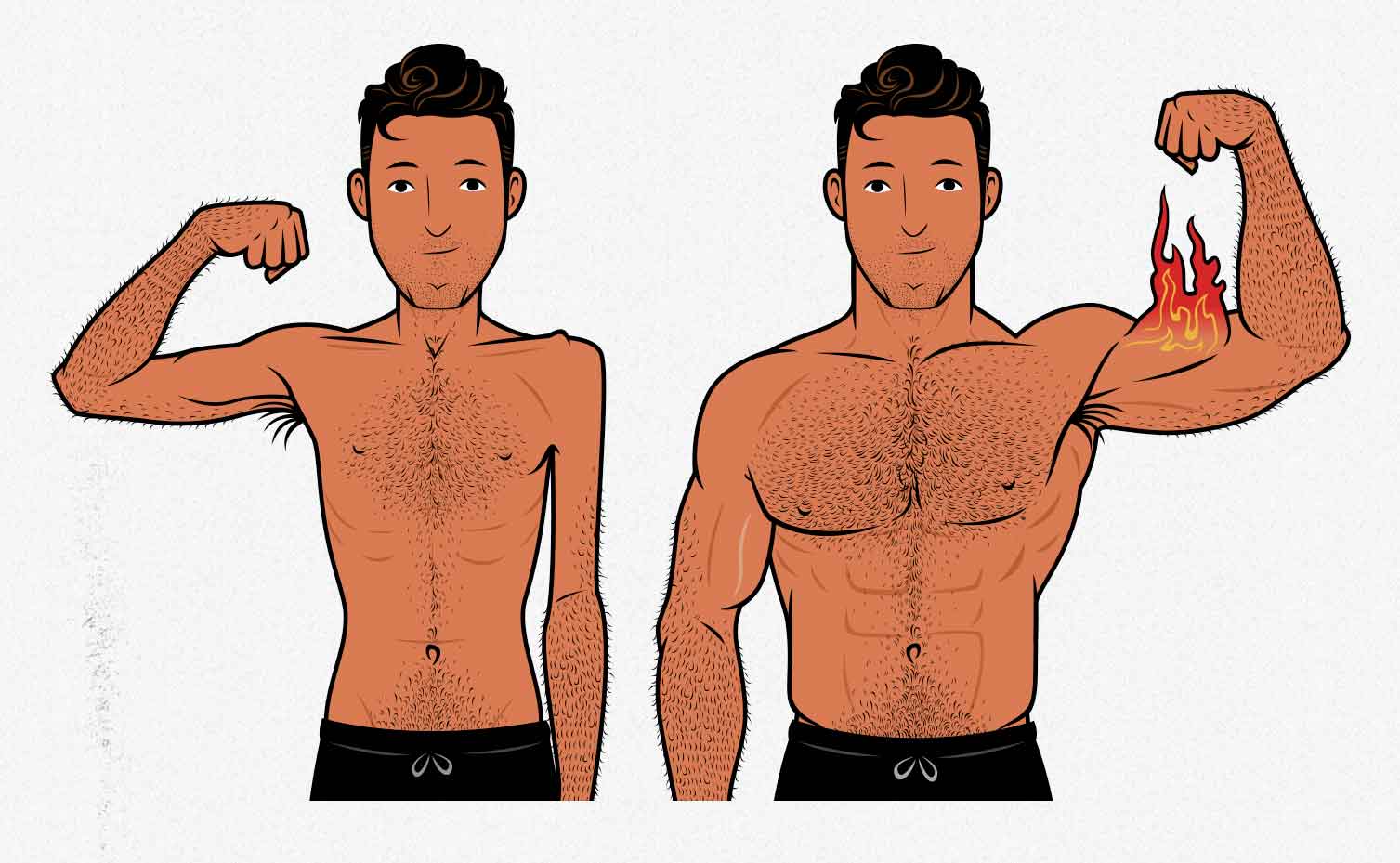
All you need to build a great dumbbell home gym are adjustable dumbbells. That’s it. You can bulk up every muscle in your body with just a single pair of adjustable dumbbells.
There are some handy pieces of equipment you can add, though:
- A workout bench will allow you to do the bench press, dumbbell flyes, pullovers, skull crushers, and a slew of other great hypertrophy exercises. If the bench is adjustable, you’ll be able to do the incline bench press, incline curls, reverse flyes, and a few other nice lifts. It’s something you’ll use almost every workout.
- A chin-up bar or gymnastic rings will allow you to do chin-ups and pull-ups, which will make it quite a bit easier to build a bigger upper back. You can also do hanging leg raises, which are one of the best ab exercises. Again, it’s something you’ll use for most workouts.
- Parallettes will let you do deficit push-ups and handstand push-ups, which are fantastic for building a bigger chest and broader shoulders. You can also do some ab exercises with them. You don’t need them, but they can be nice to have if you like bodyweight training.
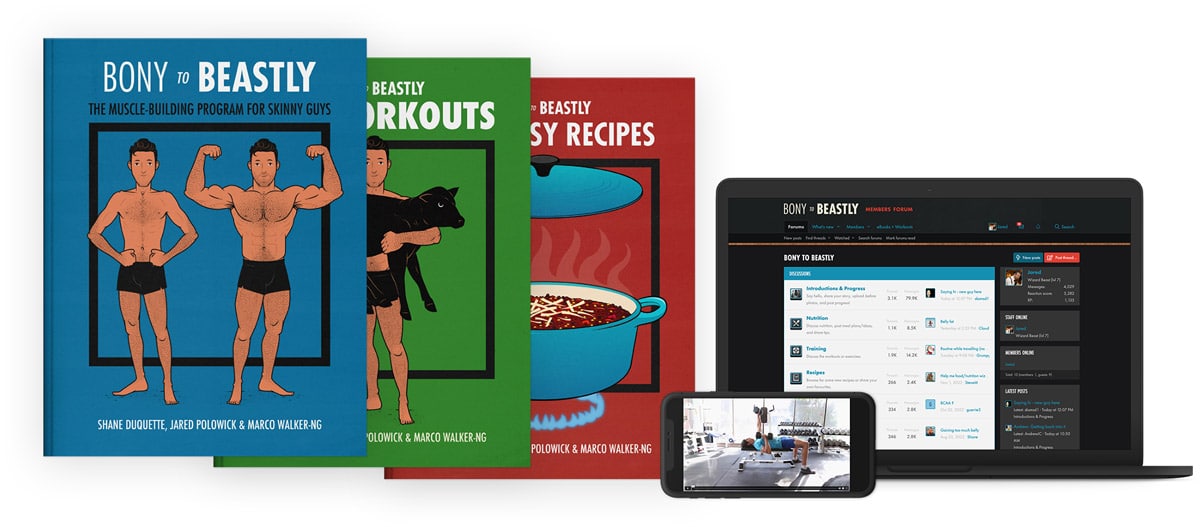
If you want more muscle-building information, we have a free bulking newsletter for skinny guys. If you want a full bulking program, including a 5-month workout routine, diet guide, recipe book, and online coaching, check out our Bony to Beastly Bulking Program. You can do the entire thing with a dumbbell home gym.
Shane Duquette is the founder of Outlift, Bony to Beastly, and Bony to Bombshell, each with millions of readers. He's a Certified Conditioning Coach (CCC), has gained 70 pounds, and has over a decade of experience helping more than 15,000 people build muscle. He also has a degree in fine arts, but those are inversely correlated with muscle growth.
